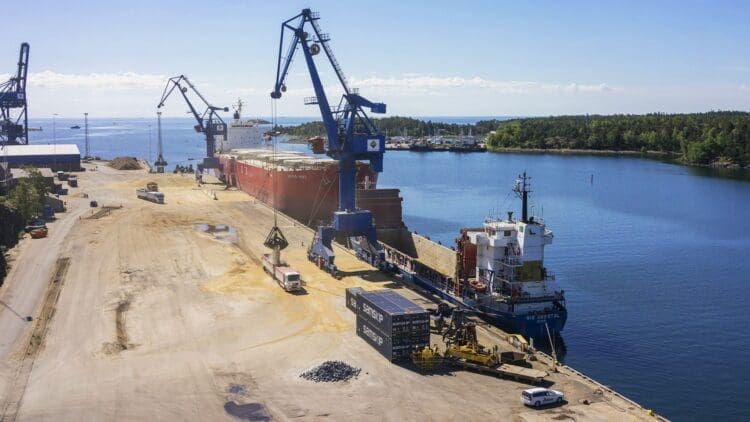The Swedish port of Oxelösund has revealed its traffic numbers recently, and the other sites in the European Union can take solace in the fact that the port industry continues to thrive amid the ever-changing environment in the global trade industry. Nations around the world have been striving to improve their ports as the sea freight traffic industry remains a crucial form of cooperative business relations while delivering employment to local residents. The Port of Oxelösund remains a pillar of the Swedish economy as it handles vast amounts of goods.
The Port of Oxelösund is a pillar of the Swedish economy
Any nation that relies on ports to ferry traffic through its waterways needs to implement measures to ensure a smooth state of operations that can lead to a significant amount of goods passing through.
And the Port of Oxelösund has certainly ensured that Sweden can handle vast amounts of goods. The Oxelösund port is an all-encompassing site that can handle entire supply chains for companies, as pointed out on their website.
At the Port of Oxelösund we offer more and have a broader range of operations than a traditional port. We offer total solutions in the field of logistics and can handle your entire transport chain, from start to finish. Our water depth of 16.5 metres, our ice-free location, direct links with both motorway and railway combined with a short approach enable us to offer our customers unique opportunities and efficient service. And we do that around the clock, all year round! – Port of Oxelösund
Officials at the Port of Oxelösund have reported an increase in traffic for the first half of this year
The port officials have reported an increase in traffic for the first half of the year, which has been praised by the government. Reports state that the port saw an impressive 2.5 million tonnes handled in H1 2025.
The Swedish seaport noted that the growth was due to goods classified as other dry bulk, which totalled nearly 1.88 million tonnes over 2025’s first half (+14% year-on-year). Port officials point out that the capacity that it has to deliver goods in a vast number of sectors.
“Operations at the Port of Oxelösund are based on bulk goods for ocean-going vessels, which make up around 50% of our net sales. But we can do much more than that and have the capacity to raise our sights even further beyond the horizon. We can assume total responsibility and offer packaged transportation solutions that create added value and peace of mind for our customers.”
The port’s container traffic totaled up to 2,177 TEUs (-51.2% yoy), while ro-ro to 2,675 cargo units (-20.8% yoy). Among the goods that passed through he region, the port of Oxelösund handled:
- 398kt of ores & steel products (-13.9% yoy)
- 93kt of wheeled (ro-ro) cargo (-13.1% yoy)
- 39kt of forest products (-20.4% yoy)
- 25kt of containerised freight (-52.8% yoy)
- 9.0kt of liquid bulk (+50% yoy)
Other ports around the world have seen significant increases in cargo passing through them, so it would appear that the ports of the world will continue to play a vital role in the global economy.
Port officials have praised the local employees for providing a stable operation
Ports are crucial to the global economy; roughly 90% of the world’s goods are transported by sea. The maritime sector is the backbone of the global economy; however, ports are subject to climate change taking place. Several ports in the US have seen significantly lower water levels that have been directly attributed to low precipitation levels in the region. The Port of Oxelösund will remain a crucial seaport for the nation of Sweden as it aims to foster more international trade in the future.





